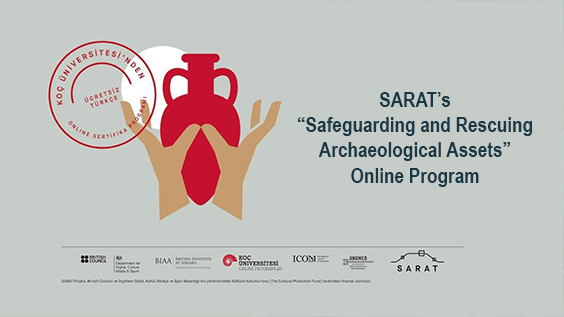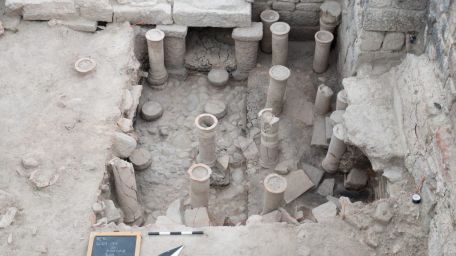
Environmental Archaeology Project (EnvArch)
The Environmental Archaeology Project, was established to provide research support on the environmental archaeology of Anatolia using approaches such as zooarcheology, archaeobotany, anthracology, environmental modeling, and related specializations.

Linking Anatolian Pasts Project
(LAP)
ANAMED’s Linking Anatolian Pasts (LAP) project aims to establish and sustain an interactive online portal that brings together now “siloed” research collections and datasets pertaining to the Anatolian past including aerial imagery, photographs, maps, manuscripts, archives, publications, museum objects, whole archaeological databases, and more.

SARAT’s “Safeguarding and Rescuing Archaeological Assets” Online Program
ANAMED is now offering the online program “Safeguarding and Rescuing Archaeological Assets” created by the SARAT project (Safeguarding Archaeological Assets of Türkiye), recipient of a prestigious Europa Nostra Award 2020 in the Education, Training and Awareness-Raising category and the runner up in the 2020 European Archaeological Heritage Prize of the European Association of Archaeologists under the management of the British Institute at Ankara (BIAA), in collaboration with Koç University’s Research Center for Anatolian Civilizations (ANAMED) and the United Kingdom branch of the International Council of Museums (ICOM UK).

Humidity and Society
8,500 Years of Climate History in Western Anatolia
The project „Humidity and Society: 8,500 Years of Climate History in Western Anatolia“ uses the analysis of stable carbon isotopes from charred wood and seeds, as well as from animal bones and other organic materials from the archaeological sites of Barcın Höyük (Neolithic to Early Bronze Age) in northwestern Anatolia, Kaymakçı (Middle to Late Bronze Age) in inland western Anatolia, and Pergamon (Middle Bronze Age to Ottoman period) near the Aegean coast for reconstructing moisture or drought in historical climate periods.

